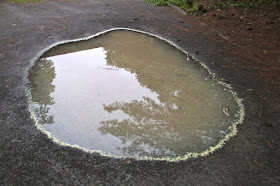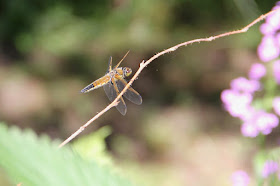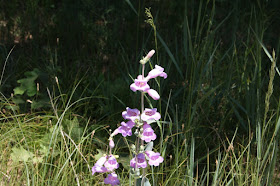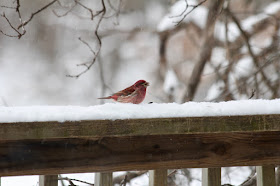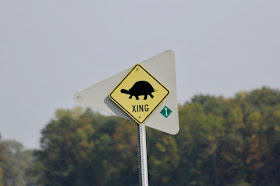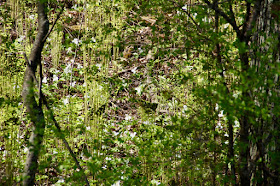 |
| hummingbird at "oriole" feeder
Photo by J. Harrington
|
We're about halfway through the last day of May. Aldo Leopold's A Sand County Almanac implies that June is a fine time for fly fishing for trout. We shall try to emulate Mr. Leopold next month. Speaking of flies, two nights ago, we think it was, we saw the first firefly we've seen in years. We don't understand where most of the fireflies have gone, but we miss them and were delighted to finally see one.
 |
| will this abundance appear in a few weeks?
Photo by J. Harrington
|
Despite, and because of, the heat, the rain and the residual humidity, the grass has been getting its first cutting. We won't be cutting where we had this abundance of beardtongue in the second half of June about five years ago. We've not noticed any this year in that area, although a bit further East early bloomers have appeared this year. No idea whether the abundance is gone or just later blooming. We'll see.
We're still watching for our first monarch, but did notice a swallowtail this morning. Summer's pattern is developing in an erratic pattern this year but, for Minnesota, that seems pretty normal. We've finally been getting a little more physically active and find that it helps our outlook.Plus it keeps us away from all the negative news on social media.
On the Grasshopper and Cricket
The poetry of earth is never dead:
When all the birds are faint with the hot sun,
And hide in cooling trees, a voice will run
From hedge to hedge about the new-mown mead;
That is the Grasshopper’s—he takes the lead
In summer luxury,—he has never done
With his delights; for when tired out with fun
He rests at ease beneath some pleasant weed.
The poetry of earth is ceasing never:
On a lone winter evening, when the frost
Has wrought a silence, from the stove there shrills
The Cricket’s song, in warmth increasing ever,
And seems to one in drowsiness half lost,
The Grasshopper’s among some grassy hills.
********************************************
Thanks for visiting. Come again when you can.
Please be kind to each other while you can.
